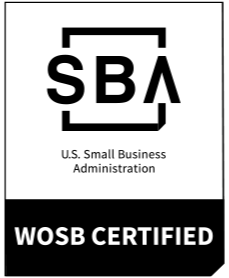CEO Blog: 5 Things Every Leader Must Be to Manage Remote Teams
Working remotely drives a whole new level of requirements.
While many look first to employees for adjustment, managers and leaders must adhere to a number of key tenets and best practices in order to ease the transformation to an organization with a large remote work population.
Over the last 30 years, I’ve had the opportunity to manage distributed teams and distributed clients as well as working remotely myself. In global organizations, we often had meetings with participation from a variety of different countries. Making those interactions work requires a lot of the leader.
There are five things I recommend every leader needs to be in order to manage a remote team effectively. These ensure that a remote team is effective and productive, while also fostering a positive, engaging organizational culture. There are five things that I think a leader must be in order to properly manage and guide a remote team:
-
Be positive
-
Be supportive
-
Be effective and efficient
-
Be a great listener
-
Be grateful
Be positive. Human beings need contact. We thrive on it physiologically. When interacting with others, great energy brings great energy. When you’re remote, the lack of physical presence makes energy all the more important. Let people know that you’re happy to be talking to them and engaging with them. As a leader, complaining about the number of Zoom meetings you’ve been on, how tired you are of being in front of the computer, or expressing that virtual meetings are subpar creates an environment where remote work is rated subpar. Whether you’re a company embracing remote work as a response to the pandemic or one where you’d like to offer it as a retention bonus, you cannot afford to create that environment. Your team wants to hear that you’re happy to see them, you’re thrilled to hear about what’s happening with them and what’s happening in their lives. Be positive, make yourself up, and smile. It’ll show in your voice and it’ll show on your face and body language. This will serve as a reminder to your entire team that the example is positive engagement.
Be supportive. In the physical environment, it’s second-nature to see body language and notice if someone is struggling with something. It’s easy to drop by a desk and ask how a deliverable is progressing. This requires even more energy in a remote work environment. One of the simplest ways to be supportive is to take the pulse of your team at the start of a meeting or through a daily check-in. Ask them how they’re doing. You can find a way to do this that feels authentic to your organization: use a number scale, go around the team and ask how they’re feeling, ask if they’re ahead or behind. Your team will feel your engagement and interest and translate that into feeling supported.
Be effective and efficient. Even the most effective remote worker faces different distractions at home than in the office, and remote burnout is a real hazard as more companies shift to full-time work. Use the same rigor with your remote work team that you do with a physically co-located or hybrid team. Focus on outcomes for virtual meetings. What do you really want to get out of the virtual time together? Use an agenda, capture actions, and do a meeting wrap-up. When you have your next session, use that output to create the agenda. Use a rotation for notetaking and action tracking to keep the full team engaged and keep your meeting purpose as the guiding force behind your conversation. These simple points telegraph to your team that you value the time they spend on camera and don’t want to squander it with misdirected energy.
Be a great listener. Early on in my executive career, video was a very costly tool. We used teleconferencing. Not only do you lose the body language, when you begin to add in global considerations—time zones, accents, language barriers, and communication customs—it became incredibly complex. The only way to succeed as a leader was to listen. It’s a skill that has benefited me throughout my career. When you’re listening, the other speaker can tell. They can feel your engagement and your involvement in what they’re saying. You can find plenty of references to wonderful guides in active listening. As a leader, try to listen “between the lines.” Listen for what is not being said. Are there particular points that your employee seems hesitant to touch? Notice it. It’s important that you listen and be very active in your listening skills.
Be grateful. This seems so simple, but it’s very meaningful to a team, particularly one that can’t sit right next to you. It’s very important to tell people, “Hey, thanks, guys. I appreciate you being on this meeting. I appreciate everything you are doing.” This is a true practice, and it’s one every leader should cultivate as it helps advance resilience in your organization. Even in the worst of times there is something to be thankful for.
In this world of remote work, work is still the active word. As leaders, we need to engage our teams and make sure that they understand our position and our expectations. They need to feel heard, they need to feel valued, and they need to feel needed. This requires more of you as a leader, but that little extra effort can create an environment where everybody wins.







